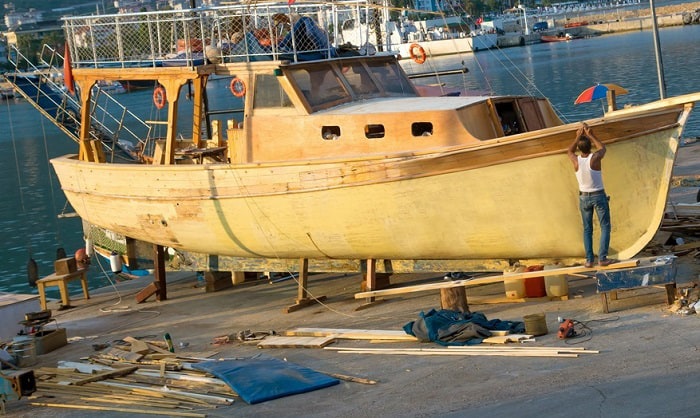Wooden Boat Making: Beyond the Planks â€" Unveiling New Perspectives
The allure of wooden boat building lies not just in the finished product, but in the process itself â€" a dance between tradition and innovation. While countless resources detail the ‘how-to,’ we delve into the less-trodden paths, exploring the often-overlooked aspects that elevate wooden boat construction from a hobby to an art form.
Rethinking the "Traditional": Is There Room for Modern Materials?
The romance of traditional wooden boatbuilding often hinges on using entirely natural materials. But what if we re-evaluated this? Could carefully selected modern composites, like epoxy resins and high-performance fabrics, enhance durability and longevity without sacrificing the aesthetic appeal? The answer, surprisingly, is a nuanced yes.
The Case for Strategic Integration
Instead of a complete replacement, consider integrating modern materials strategically. Imagine using epoxy to create a stronger, more water-resistant bond between planks, minimizing the risk of rot and extending the lifespan of the boat. Or, employing carbon fiber reinforcement in high-stress areas like the keel, without compromising the beautiful wooden hull. This approach allows us to benefit from both the time-tested beauty of wood and the advanced properties of modern materials â€" a marriage of old and new, offering a compelling case for innovative boat building.
Beyond the Blueprint: The Unsung Role of Digital Design
Many traditional boat builders rely on time-honored plans and techniques passed down through generations. However, modern digital design tools offer a unique opportunity to optimize designs for both aesthetics and structural integrity. How can we leverage this?
Virtual Prototyping and Parametric Modeling
Software like Rhino, Fusion 360, and specialized marine design programs enable the creation of incredibly detailed 3D models. This allows for virtual prototyping, facilitating experimentation with different hull shapes and structural elements before a single plank is cut. Parametric modeling further pushes this by allowing builders to quickly adjust parameters (like beam width or keel depth) and instantly see the impact on the overall design, leading to potentially superior, more efficient builds. This isn't just about speed; it's about precision and optimization that traditional methods struggle to match. Think of it as having a digital 'wind tunnel' for your boat design before even touching the wood.
The "Green" Boat Builder: Sustainability and Ethical Sourcing
The environmental impact of boat building is rarely discussed in detail. Given the rising concerns about deforestation and sustainable practices, how can we ensure our wooden boat projects are environmentally responsible?
Choosing Sustainable Timber and Responsible Disposal
Selecting sustainably harvested wood â€" certified by organizations like the Forest Stewardship Council (FSC) â€" is paramount. This ensures that the timber comes from responsibly managed forests, mitigating the environmental damage caused by unsustainable logging practices. Further, we need to consider the end-of-life of our creations. Proper disposal or even recycling and repurposing of boat components are crucial steps towards a more environmentally conscious approach to wooden boat building.
The Human Element: Mentorship and Knowledge Sharing
The craft of wooden boat building is deeply rooted in apprenticeship and shared knowledge. Yet, with fewer experienced builders, how do we bridge the generational gap?
Building a Network and Documenting Skills
Online platforms, workshops, and collaborative projects are crucial in facilitating knowledge transfer. Creating comprehensive video documentation of building techniques, along with online forums and mentorship programs, can help preserve and spread these invaluable skills. This ensures the continuation of this ancient craft for generations to come. Think of it as building a digital library of wooden boat building expertise, a living archive accessible to anyone with a passion for the craft.
Wooden boat building transcends mere construction; it's a journey of craftsmanship, innovation, and sustainability. By embracing these new perspectives and integrating them into our practice, we can build boats that are not only beautiful and functional but also reflective of our commitment to tradition, innovation, and environmental stewardship.






